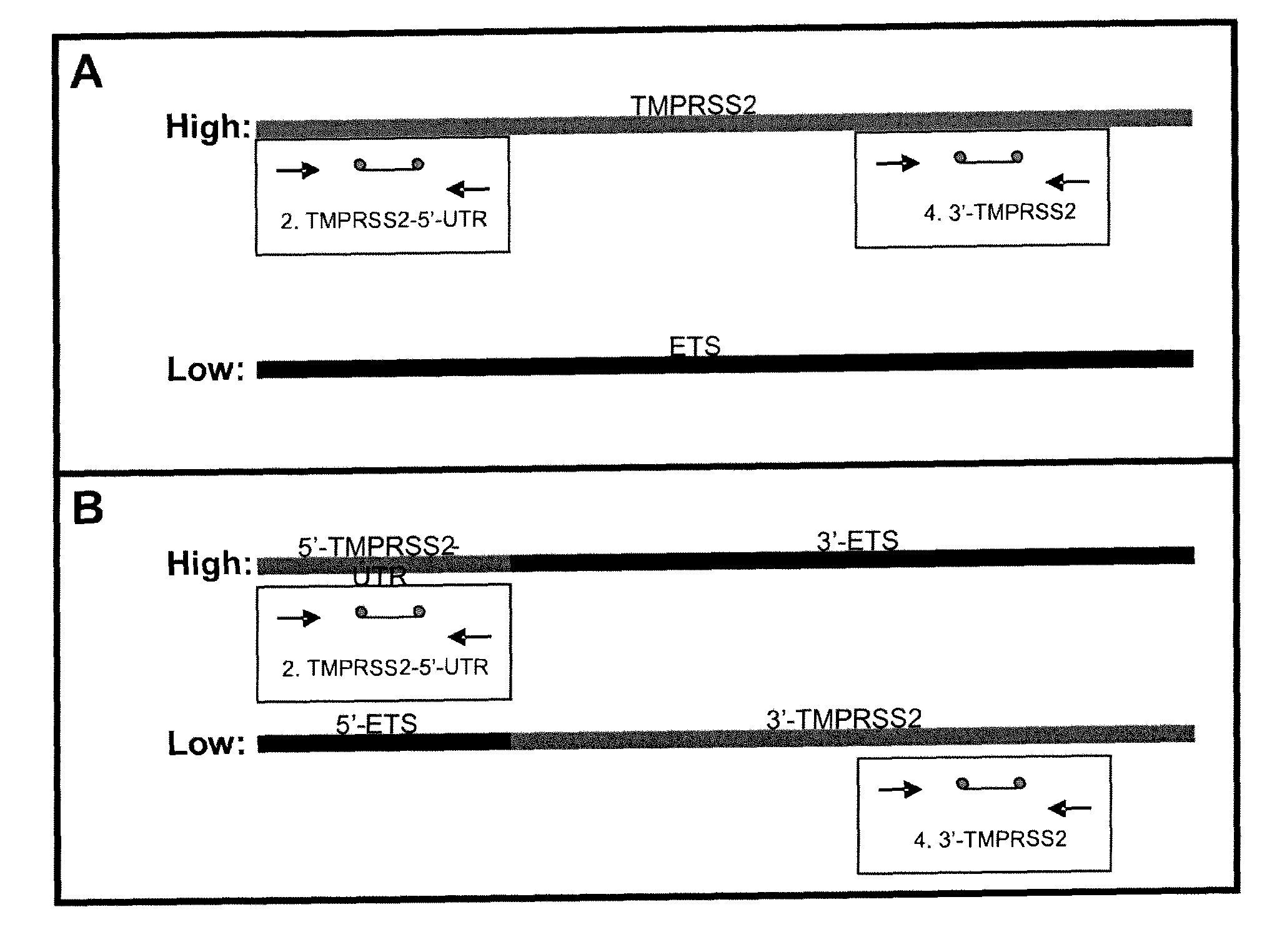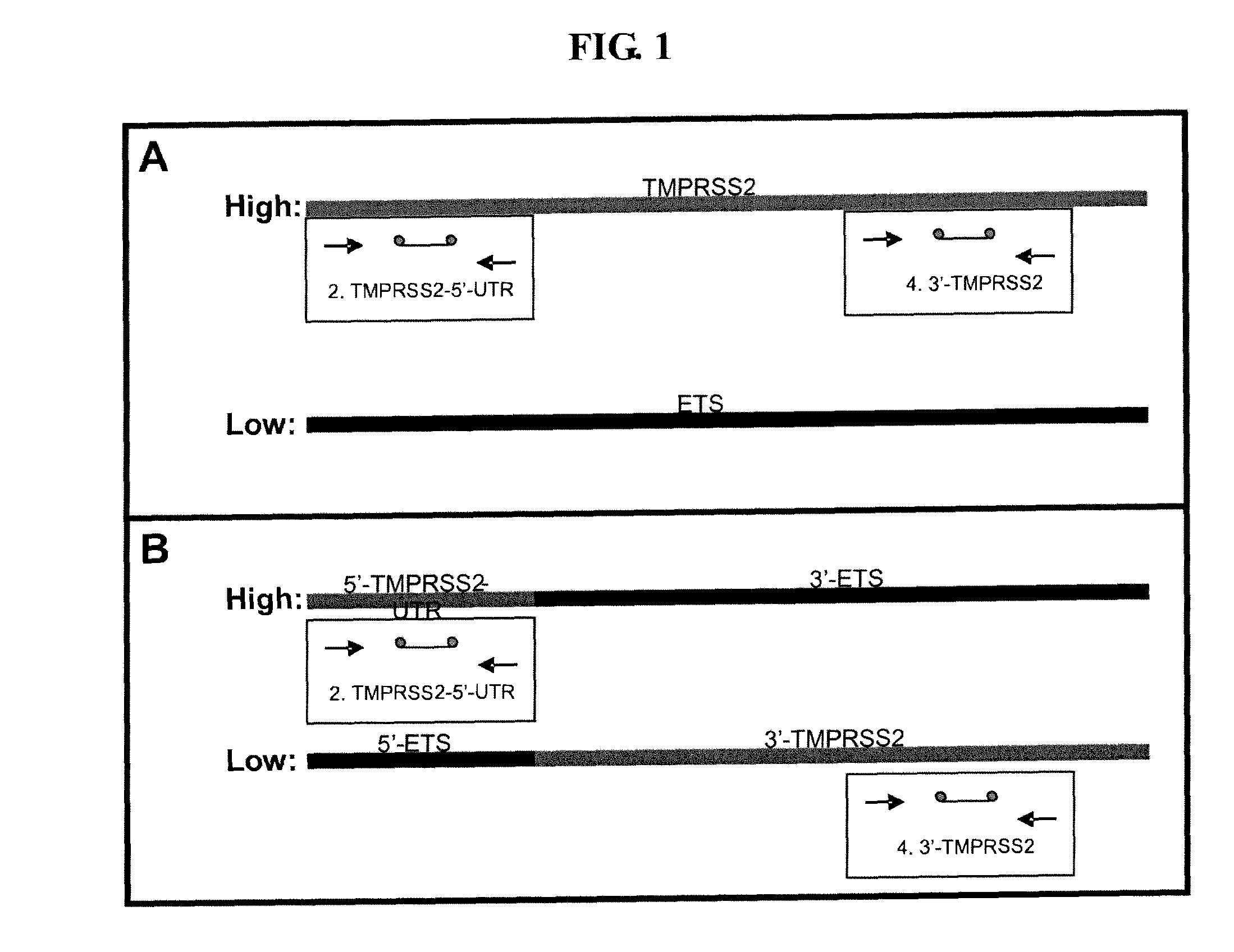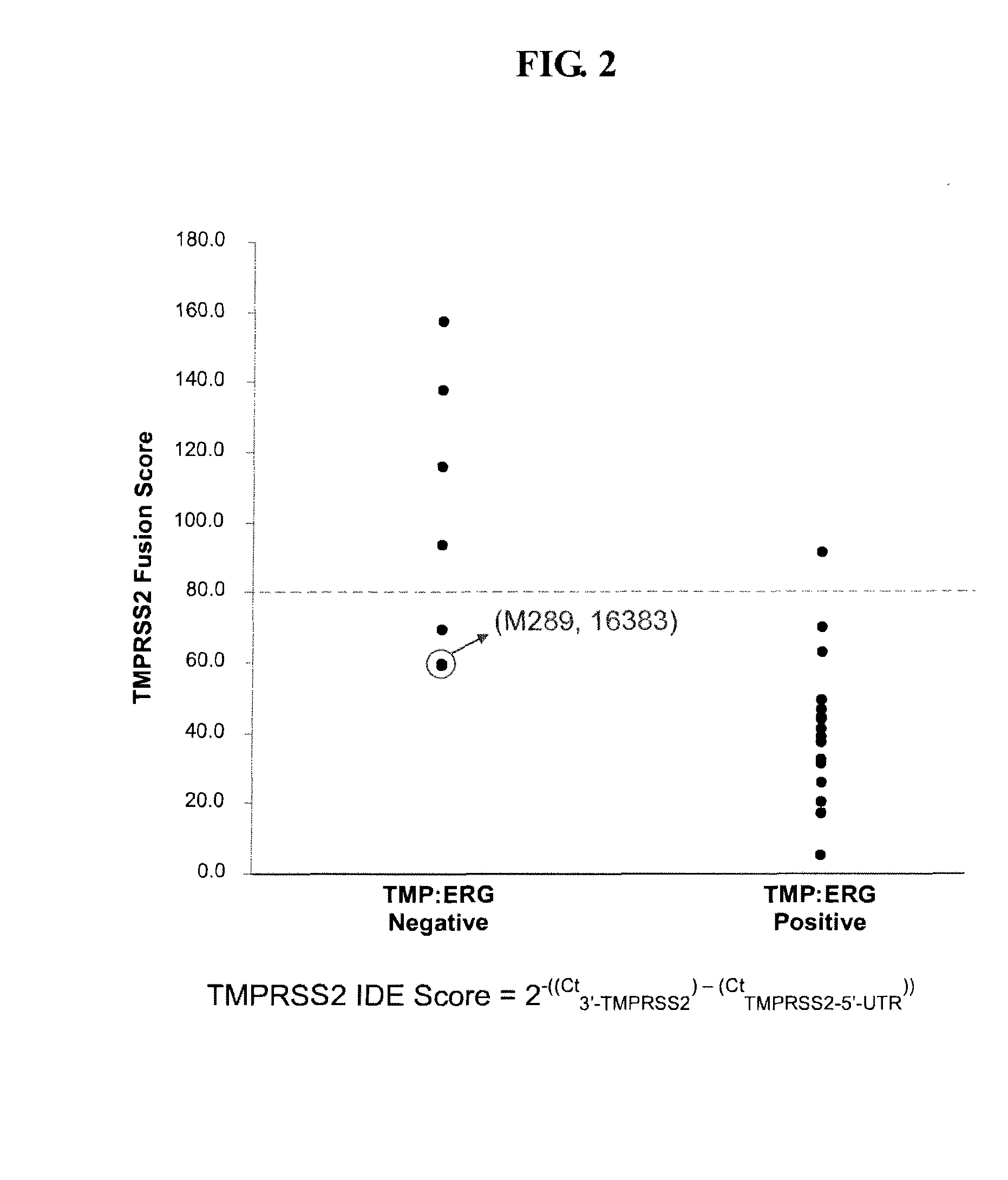Methods for detecting gene dysregulations
a gene dysregulation and detection method technology, applied in the field of detection of gene dysregulation, can solve the problems of genetically unbalanced gametes, various defects, and inability to survive the progeny of unbalanced gametes
- Summary
- Abstract
- Description
- Claims
- Application Information
AI Technical Summary
Benefits of technology
Problems solved by technology
Method used
Image
Examples
example 1
[0115]The examples below illustrate a standard protocol for performing RT-PCR and analyzing in real time. The TaqMan system of probe labeling is an exemplary method of real time detection of PCR amplicons. The following examples serve to illustrate the present invention and is in no way intended to limit the scope of the invention.
[0116]To detect the presence of translocations or fusions involving TMPRSS2, commonly found fused with ETS transcripts in genetic samples from prostate cancer patients, an approach was taken that identifies breakage of the 5′ and 3′ portions of TMPRSS2 and the subsequent translocation of the 3′ portion to a region under the control of regulatory elements that are less robust than the regulatory elements normally associated with TMPRSS2. ETS (E-Twenty Six) is a family of transcription factors which include, for example, ERG and ETS Translocation Variants (ETV), which include, for example, ETV1, ETV4 and ETV5). TMPRSS2:ERG and TMPRSS2: ETV translocations gen...
example 2
[0120]RNA Extraction: RNA from formalin-fixed and paraffin-embedded (FFPE) tissue was extracted by column purification (HighPure miRNA isolation kit, Roche) followed by DNase I digestion (Invitrogen). Plasma RNA was extracted as follows: Study 1:1 mL plasma from each donor was extracted by NucliSENS® easyMAG® (Biomerieux) followed by DNase I digestion (Invitrogen). Plasma extraction was further optimized in Study 2 as follows: 2 mL plasma from each donor was extracted by NucliSENS® easyMAG® (Biomerieux) followed by DNase I digestion in conjunction with RNA concentration utilizing RNeasy mini kit (Qiagen).
[0121]Real-time RT-PCR: TaqMan primer and probe sets were designed to independently amplify 5′ and 3′ regions of each gene (TMPRSS2 model shown in FIG. 1). In separate reactions, 5′ and 3′ transcript regions and an endogenous control were amplified by real-time RT-PCR (RNA Ultrasense, Invitrogen; ABI 7900 Sequence Detector, Applied Biosystems).
[0122]Intragenic Differential Expressio...
example 3
[0133]A fusion gene with transforming activity, echinoderm microtubule associated protein like 4-anaplastic lymphoma kinase (EML4-ALK), is found in approximately 5% of NSCLCs of lung cancer patients. The presence of the EML4-ALK fusion can be predictive of the response of these patients to certain therapies. We applied the IDE methodology to test the ability of using IDE to identify patients with potential ALK translocation, not limited to know variants or fusion partners. Patient lung cancer tissue samples were analyzed using the IDE methodology by determining the ALK IDE cutoff value and then comparing the calculated cutoff to the ALK IDE values from lung cancer tissue samples. The positive results were further analyzed by direct detection of EML4-ALK fusions using RT-PCR. Finally, a subset of the NSCLC positive samples were screened by immunohistochemistry (IHC) and / or fluorescence in situ hybridization (FISH).
[0134]ALK IDE cutoff determination: ALK IDE was analyzed in lung cance...
PUM
| Property | Measurement | Unit |
|---|---|---|
| temperature | aaaaa | aaaaa |
| temperatures | aaaaa | aaaaa |
| chromosome structure | aaaaa | aaaaa |
Abstract
Description
Claims
Application Information
 Login to View More
Login to View More - R&D
- Intellectual Property
- Life Sciences
- Materials
- Tech Scout
- Unparalleled Data Quality
- Higher Quality Content
- 60% Fewer Hallucinations
Browse by: Latest US Patents, China's latest patents, Technical Efficacy Thesaurus, Application Domain, Technology Topic, Popular Technical Reports.
© 2025 PatSnap. All rights reserved.Legal|Privacy policy|Modern Slavery Act Transparency Statement|Sitemap|About US| Contact US: help@patsnap.com



